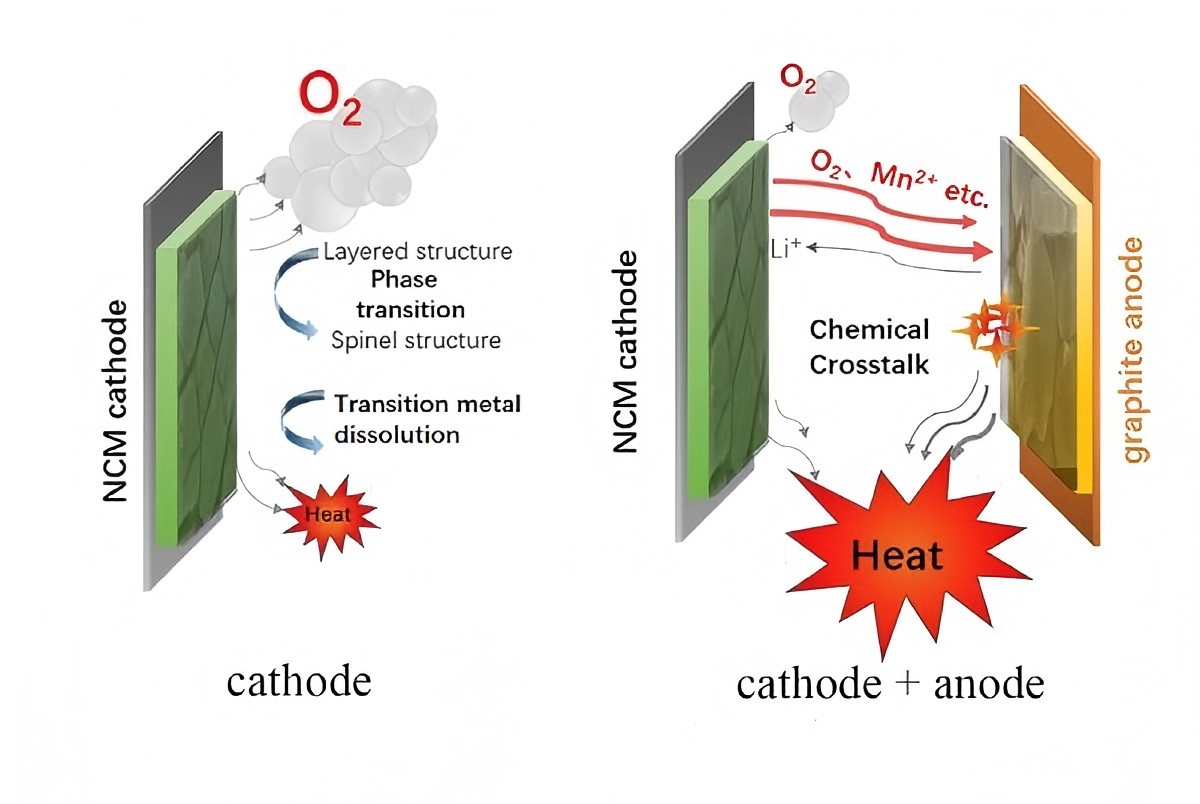
Lithium Iron Phosphate (LiFePO4) batteries have become one of the most popular choices for energy storage solutions due to their long lifespan, high thermal stability, and safety features. However, like all energy storage devices, LiFePO4 batteries are not immune to potential risks. One of the most serious risks associated with lithium-based batteries, including LiFePO4, is thermal runaway. While LiFePO4 batteries are generally safer than other lithium-ion chemistries, thermal runaway can still occur under certain conditions. In this blog, we will explore the causes of LiFePO4 thermal runaway, the associated hazards, and potential solutions to mitigate these risks.
Thermal runaway is a phenomenon where a battery's temperature increases uncontrollably, causing internal reactions that lead to further heating. In extreme cases, this can result in the release of toxic gases, fire, or even explosion. This self-perpetuating process can be triggered by internal or external factors and is a significant concern for lithium-based batteries.
While LiFePO4 batteries are known for their stable thermal behavior compared to other lithium-ion chemistries (such as lithium cobalt oxide), thermal runaway can still occur due to various factors:
a. Overcharging: Overcharging a LiFePO4 battery can cause excessive internal heat generation, leading to thermal runaway. Charging beyond the recommended voltage range can force the battery to undergo unwanted reactions that cause the temperature to rise uncontrollably.
b. Short Circuits: A short circuit, whether internally (due to a defect) or externally (caused by physical damage or improper connections), can create a sudden surge of current. This can generate significant heat and, if not properly managed, trigger thermal runaway.
c. Physical Damage: Batteries exposed to external physical damage (e.g., impact, puncturing, or crushing) can disrupt the internal structure, causing short circuits or chemical reactions that lead to thermal runaway.
d. Poor Battery Management Systems (BMS): LiFePO4 batteries rely on Battery Management Systems (BMS) to monitor and control temperature, voltage, and current levels. A malfunction or failure in the BMS may result in improper monitoring and control, causing the battery to overcharge, over-discharge, or overheat, leading to a risk of thermal runaway.
e. Elevated Temperatures: External factors, such as high ambient temperatures or inadequate cooling in systems that use LiFePO4 batteries, can also contribute to thermal runaway. Excessive heat can degrade the battery's internal components and potentially lead to failure.
The hazards of thermal runaway in LiFePO4 batteries are serious, though less extreme than those seen in other lithium-ion chemistries. These include:
a. Fire: Excessive heat caused by thermal runaway can cause the battery to ignite, creating a fire hazard, especially in confined spaces where ventilation is poor.
b. Toxic Gas Emissions: During thermal runaway, LiFePO4 batteries can release toxic gases such as hydrogen fluoride, which can be harmful to human health and the environment.
c. Explosions: Although LiFePO4 batteries are considered safer in terms of explosive risk compared to other lithium-ion batteries, if the temperature and pressure within the battery continue to rise without relief, it may eventually lead to an explosion.
d. Damage to Devices and Surrounding Areas: Thermal runaway in LiFePO4 batteries can cause extensive damage to the device or equipment in which the battery is housed, as well as surrounding structures. This can lead to costly repairs and potential hazards to people nearby.
While the risk of thermal runaway in LiFePO4 batteries is low compared to other lithium-ion chemistries, it is still essential to implement preventive measures to reduce the likelihood of thermal runaway. Here are some solutions:
a. Robust Battery Management Systems (BMS): A well-designed BMS is crucial to ensuring safe operation. The BMS should monitor the voltage, temperature, and current levels, providing protective shutdown mechanisms if any parameter exceeds safe limits. Regular calibration and maintenance of the BMS are also vital.
b. Proper Charging and Discharging Protocols: Users must follow manufacturer recommendations for charging and discharging the batteries. This includes using chargers that are compatible with LiFePO4 batteries and ensuring that they do not exceed recommended voltage or current limits.
c. Adequate Cooling Systems: Implementing proper cooling systems, especially in high-demand applications (e.g., electric vehicles, energy storage systems), can help maintain the temperature of the battery within safe operating limits. This is crucial for preventing the battery from overheating.
d. Protective Enclosures: Using protective casings or enclosures can shield the battery from external physical damage. These casings should also be designed to dissipate heat and manage pressure buildup in case of an issue, preventing catastrophic failure.
e. Safe Storage and Handling: LiFePO4 batteries should be stored in a cool, dry place, away from extreme temperatures, direct sunlight, and flammable materials. Proper handling techniques, including avoiding impacts or punctures, can also minimize risks.
f. Regular Inspections: Periodic inspection of LiFePO4 batteries, including checking for any signs of damage, degradation, or malfunction, can prevent thermal runaway incidents. Batteries that show signs of swelling, leaking, or corrosion should be replaced immediately.
While LiFePO4 batteries are generally safer than other lithium-ion chemistries, understanding the potential risks, including thermal runaway, is essential. By knowing the causes of thermal runaway and implementing the appropriate safety measures, we can maximize the benefits of LiFePO4 batteries while minimizing the associated risks. Advances in battery technology, such as improved BMS, better thermal management, and more robust battery designs, are continually making LiFePO4 batteries even safer for a wide range of applications.
Next:900pcs 206Ah, 230Ah and 280Ah LiFePO4 Battery Cells to Thailand
Previous:How to Calculate the Capacity and Voltage of LiFePO4 Battery You Need
Contact Person: Miss. Elsa Liu
| WhatsApp : | +8617763274209 |
|---|---|
| Skype : | +8617763274209 |
| WeChat : | 17763274209 |
| Email : | Elsa@lifepo4-battery.com |